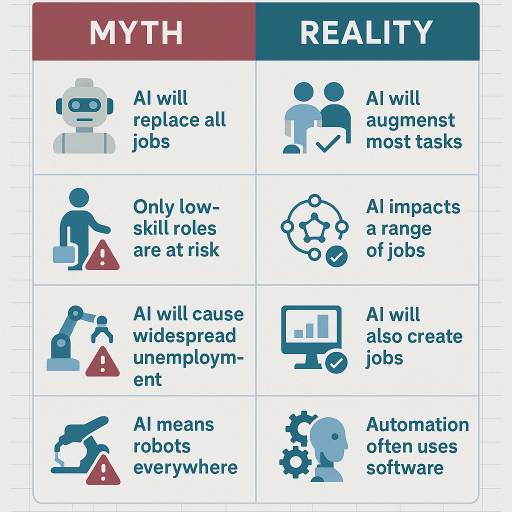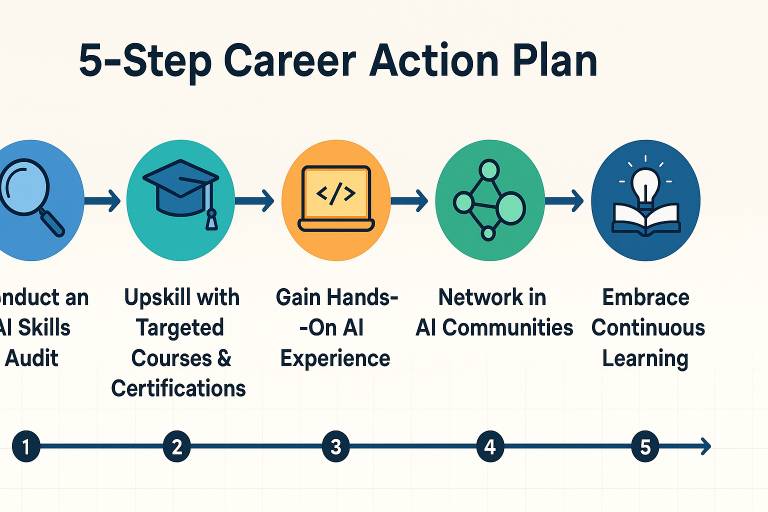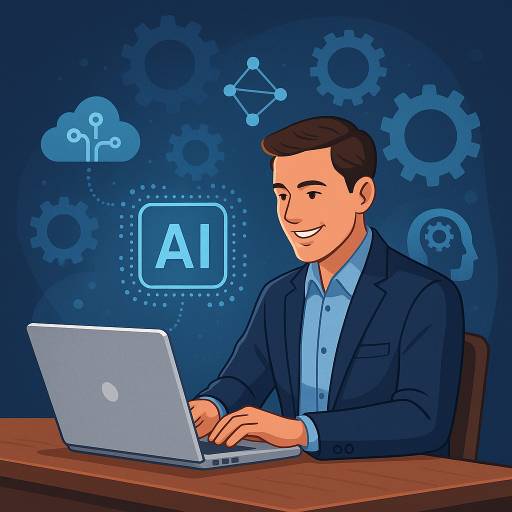
Why Everyone’s Talking About AI and Jobs
From breathless headlines warning that customer support or even entire professions are on the chopping block to stories celebrating newfound “AI-powered” roles, it’s hard to know what to believe. OpenAI’s CEO recently predicted whole job categories could vanish by 2025, while the World Economic Forum (WEF) forecasts nearly as many new positions emerging as those lost (News.com.au, World Economic Forum). This post cuts through the noise to debunk the top 15 AI-related job myths—so you can confidently plan your next career move.

Myth 1: “AI Will Replace All Jobs”
Reality: AI shines on narrow tasks—analyzing data, translating text, or spotting patterns—but struggles with the full complexity of most roles. According to MIT and New Trader U, certain manufacturing functions may disappear, but complete job eradication is rare (The Economic Times).
Myth 2: “Only Low-Skill Roles Are at Risk”
Reality: Entry-level white-collar jobs—from basic coding to junior analyst positions—are equally vulnerable. A WEF survey finds 40% of employers plan cuts where AI can automate tasks (World Economic Forum), and AI tools are now screening resumes and drafting reports once reserved for college grads.
Myth 3: “AI Will Cause Widespread Unemployment”
Reality: While some displacement is inevitable, AI also creates roles in development, ethics, and oversight. The WEF projects 9 million jobs lost but 11 million new ones created by 2025 (World Economic Forum). Think of AI as a transformer, not an annihilator.
Myth 4: “AI-Exposed Jobs Pay Less”
Reality: Workers who master AI tools are commanding a 56% wage premium on average—up from 25% last year—thanks to higher productivity and demand for AI literacy (PwC, Economist Impact).
Myth 5: “Only Big Companies Can Use AI”
Reality: Small and mid-sized businesses (SMBs) are adopting AI fast: 76% are experimenting or using AI today, and 25% have integrated it into daily operations (NSBA | Since 1937, PayPal Newsroom). The barrier of entry has never been lower.
Myth 6: “Prompt Engineering Isn’t a Career”
Reality: Prompt engineering—a craft of crafting effective AI inputs—is a booming specialization, with a projected market CAGR of 32.8% through 2030 (Coursera). Salaries range from $80K–$200K, rivaling many software engineering roles (eWEEK).
Myth 7: “AI Solutions Are Perfect”
Reality: AI reflects its training data—biases, errors, and all. Human oversight is essential to catch glitches, ethical issues, and hallucinations. No matter how advanced, AI systems still need your judgment.
Myth 8: “All AI Content Is High Quality”
Reality: “AI slop” floods the web—low-effort, high-volume output that lacks nuance. Effective AI use demands skillful prompting, curation, and editing.
Myth 9: “AI Will Replace Recruiters”
Reality: AI can screen resumes and rank candidates, but human recruiters bring context, emotional intelligence, and cultural fit judgments that a model cannot replicate.
Myth 10: “Degrees Matter More Than Skills”
Reality: Skill-based hiring is booming. Online micro-certifications, bootcamps, and portfolio projects often outweigh formal degrees, especially in fast-moving AI subfields.
Myth 11: “AI Implementation Is One-and-Done”
Reality: Deploying AI requires continuous monitoring, retraining, and data governance to stay accurate and fair. It’s an ongoing partnership, not a plug-and-play solution.
Myth 12: “AI Kills Creativity”
Reality: AI amplifies creativity by generating rapid ideas, first drafts, and visual concepts. The human–AI duo often outperforms either alone.
Myth 13: “My Industry Is Immune”
Reality: AI is touching healthcare (diagnostics), legal (research summarization), and education (personalized tutoring). No sector is off-limits—prepare to adapt.
Myth 14: “AI Adaptation Takes Decades”
Reality: The pace of change is measured in months, not years. Tools evolve swiftly, so upskilling is an urgent, ongoing exercise.
Myth 15: “AI Means Robots Everywhere”
Reality: Much automation is software-based—chatbots, analytics platforms, and decision-support systems. Physical robots remain specialized hires that still need human engineers and technicians (The Economic Times).
Your 5-Step Career Action Plan

1. Conduct an AI Skills Audit
Inventory your current toolkit—software, data analysis, domain expertise—and map it against burgeoning AI competencies.
2. Upskill with Targeted Courses & Certifications
Enroll in AI fundamentals, data science, and prompt engineering programs. Look for micro-credentials from recognized providers.
3. Gain Hands-On AI Experience
Launch side projects, contribute to open-source AI repos, or join hackathons. Real experience trumps theory.
4. Network in AI Communities
Attend conferences, engage on forums like AI Stack Exchange, and follow thought leaders on social media.
5. Embrace Continuous Learning
Subscribe to AI newsletters, podcasts, and research digests. Set a monthly learning goal to stay current.
Conclusion
Rather than fearing a robotic takeover, frame AI as a collaborator that can elevate your career—if you take proactive steps today. By debunking myths and following a clear action plan, you’ll be positioned not just to survive but to thrive in the AI-augmented workplace of 2025 and beyond.
Frequently Asked Questions
Will AI take my specific job in [Industry]?
AI impact varies by role and tasks. Audit your daily activities: if they’re repetitive and rules-based, that’s where to start upskilling.
H3: How long do I have to upskill?
Change is happening rapidly—aim to start courses or projects within the next 3–6 months.
What are the highest-paying AI-adjacent roles?
Prompt engineers, AI ethicists, machine learning ops engineers, and AI product managers top the list, with salaries often exceeding $150K.
You can also checkout Best AI tools for content creators in 2025




